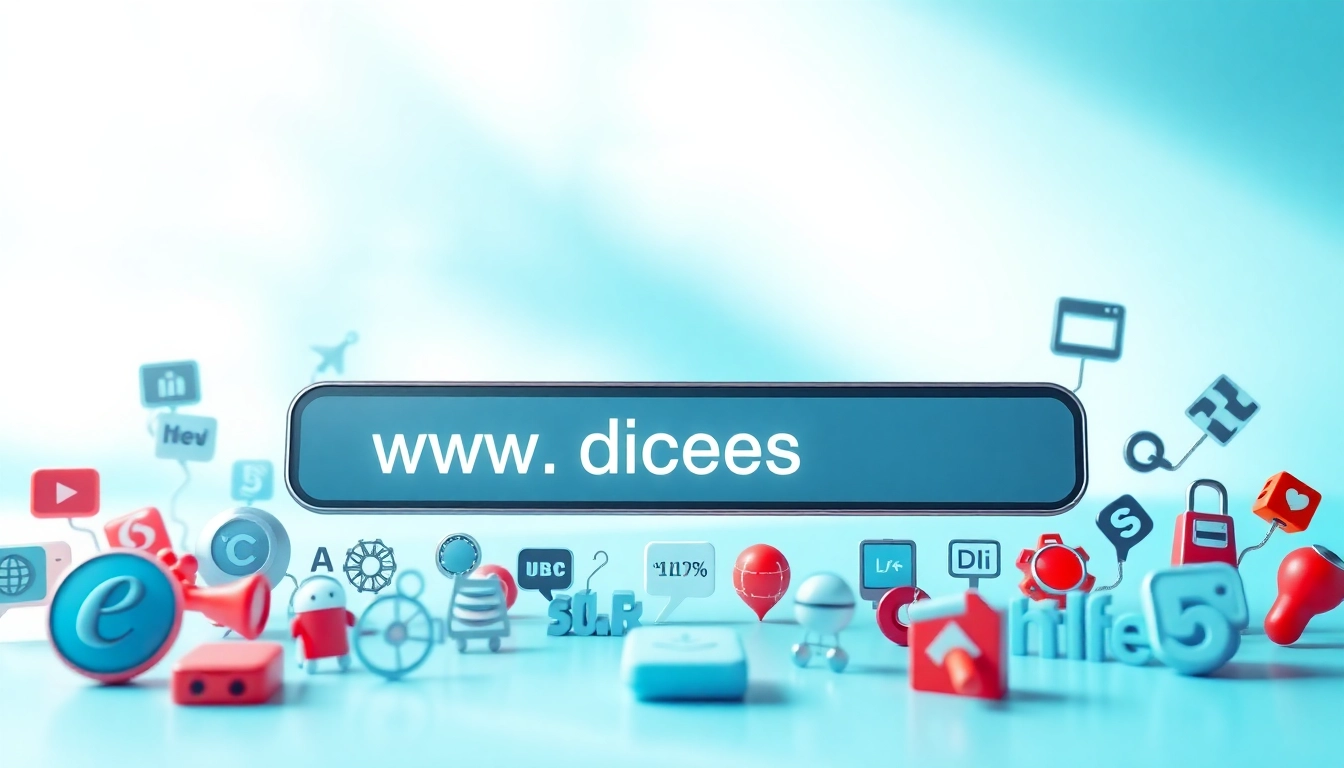The Role of chatgpt Chatbots in Digital Communication
In today’s rapidly evolving digital landscape, the importance of effective communication cannot be overstated. Businesses are increasingly leveraging technology to enhance their customer interactions, streamline processes, and provide immediate support. Among the various technological advancements, chatgpt chatbots have emerged as powerful tools for facilitating real-time conversations, improving user experiences, and driving engagement. By utilizing artificial intelligence, these chatbots can mimic human-like dialogues, making them valuable assets in both customer service and digital marketing.
1.1 Understanding chatgpt Chatbots
chatgpt chatbots are AI-driven conversational agents designed to interact with users through text or voice, simulating human-like conversations. They are built on advanced natural language processing (NLP) techniques, allowing them to comprehend and respond to user queries effectively. The core functionality of these chatbots revolves around understanding context, managing dialogue, and providing relevant responses based on a user’s input.
The underlying technology takes advantage of machine learning algorithms, which allow the chatbot to learn from past conversations and adapt over time. This continuous improvement process not only enhances the chatbot’s accuracy but also helps create a more personalized interaction for users.
1.2 Benefits of Implementing chatgpt Chatbots
Integrating chatgpt chatbots into business operations can yield numerous advantages:
- 24/7 Availability: Unlike human agents, chatgpt chatbots can operate around the clock, providing assistance to customers anytime they need it. This constant availability can significantly improve customer satisfaction.
- Cost Efficiency: By automating routine queries and tasks, businesses can reduce operational costs associated with hiring and training additional staff.
- Scalability: Chatbots can handle multiple inquiries simultaneously, making it easier for businesses to scale their customer service without compromising quality.
- Data Collection and Analysis: Each interaction provides valuable insights into customer preferences and behavior, enabling businesses to make data-driven decisions.
- Enhanced Customer Experience: With instant responses and personalized interactions, chatbots can provide a seamless experience that meets customer expectations.
1.3 Common Use Cases for Business Integration
Businesses from various sectors are incorporating chatgpt chatbots in diverse ways. Some common use cases include:
- Customer Support: Chatbots can efficiently handle FAQs, troubleshoot issues, and guide customers through various processes without the need for human intervention.
- Lead Generation: By engaging potential customers through interactive conversations, chatbots can qualify leads and pass them to human sales teams.
- E-commerce: chatgpt chatbots can assist customers in browsing products, recommending items based on preferences, and streamlining the checkout process.
- Feedback Collection: Businesses can use chatbots to gather customer feedback and reviews, fostering a continuous improvement cycle.
- Appointment Scheduling: Many service-oriented businesses deploy chatbots to help clients schedule appointments, reminding them via follow-up messages.
Key Features of an Effective chatgpt Chatbot
2.1 Natural Language Processing Capabilities
The effectiveness of a chatgpt chatbot largely depends on its NLP capabilities. Advanced NLP techniques allow the chatbot to understand and process human language, enabling it to comprehend not just the words but the intent behind the queries. By recognizing context and sentiment, these chatbots can tailor responses effectively, making the interaction feel more natural for users.
Additionally, NLP empowers chatbots to handle various languages and dialects, broadening their appeal in global markets. Businesses can implement multilingual versions of chatbots to cater to diverse customer bases, increasing accessibility and potential customer engagement.
2.2 Customization Options for Brand Voice
Establishing a consistent brand voice is crucial for companies looking to maintain a strong identity in the digital space. chatgpt chatbots offer extensive customization options, enabling businesses to align the chatbot’s tone and style with their brand personality. This personalization includes choices in language format, response types, and even the use of emojis and visual elements.
By curating the chatbot to reflect their unique voice, companies can create a cohesive user experience that resonates with their target audience and reinforces brand loyalty.
2.3 Integrating with Other Business Tools
An effective chatgpt chatbot is not a standalone solution but part of a broader ecosystem of business tools. Integrating chatbots with customer relationship management (CRM) systems, email marketing platforms, and other software enables businesses to streamline workflows and enhance overall efficiency.
For example, when a chatbot can access a CRM database, it can provide personalized responses based on customer history, making interactions more relevant. Additionally, scheduling applications or inventory management systems can be integrated to facilitate seamless customer interactions, significantly reducing response times and improving service quality.
How to Implement a chatgpt Chatbot
3.1 Step-by-Step Guide to Setup
Implementing a chatgpt chatbot involves several steps to ensure an effective rollout. Here’s a detailed guide:
- Define Objectives: Begin by outlining the specific objectives you want to achieve with the chatbot. Identify the primary functions it will serve and the problems it aims to solve.
- Select the Platform: Choose a chatbot development platform that fits your technical needs and budget. The platform should support the implementation of natural language processing along with other essential features.
- Design the Conversation Flow: Map out the flow of conversations based on anticipated user queries. This process also includes creating various scenarios and responses that the chatbot must handle.
- Develop the Chatbot: Using your chosen platform, begin programming the chatbot to handle the defined conversation pathways effectively. Ensure that the chatbot can switch between topics seamlessly.
- Test and Iterate: Conduct thorough testing with sample users to identify any issues or gaps in the conversational flow. Gather feedback and continually refine the chatbot’s responses for better accuracy.
- Launch and Monitor Performance: Once satisfied with its functionality, launch the chatbot and continuously monitor its performance. Use analytics tools to assess user engagement and conversation success rates.
3.2 Training Your Chatbot for Optimal Interaction
A chatbot’s effectiveness is largely determined by how well it is trained. This involves feeding it a diverse range of inputs to enhance its understanding of user intents. Collecting data from past interactions and user behavior provides a solid foundation for training the chatbot.
To optimize training, businesses can deploy machine learning models that allow the chatbot to refine its responses over time. Incorporating user feedback as part of the learning process can also help the chatbot evolve and improve its accuracy. The goal is to ensure the chatbot not only responds correctly but also maintains a conversational flow that feels human-like.
3.3 Measuring Success and User Engagement
To determine the effectiveness of a chatgpt chatbot, businesses should establish key performance indicators (KPIs) that align with their objectives. Common metrics to track include:
- Response Time: Measure how quickly the chatbot responds to user inquiries.
- User Satisfaction Rate: Collect feedback from users regarding their satisfaction with the chatbot’s interactions.
- Engagement Rate: Track the number of users engaging with the chatbot versus total visitors.
- Escalation Rate: Assess how often the chatbot needs to escalate issues to human agents.
- Resolution Rate: Measure how effectively the chatbot resolves user queries without requiring human intervention.
By closely monitoring these KPIs, businesses can make data-driven adjustments to improve performance and ensure that the chatbot remains an effective tool for enhancing customer engagement.
Challenges and Solutions in Using chatgpt Chatbots
4.1 Overcoming User Resistance
While chatgpt chatbots offer numerous advantages, some users may be hesitant to engage with them, especially when human interactions are the norm. To encourage acceptance, businesses can provide clear communication about the chatbot’s capabilities and benefits. Users should understand that the chatbot is designed to enhance, not replace, human interactions.
Implementing a hybrid model, where chatbots handle simple queries and escalate more complex issues to humans, can also alleviate concerns. Educating users about the efficiency and advantages of using chatbots can foster a more positive attitude towards technology-driven interactions.
4.2 Handling Complex Queries
Despite advancements in NLP, chatgpt chatbots may struggle with complex or ambiguous queries. It is crucial to prepare chatbots for the likelihood of encountering nuanced conversations. When designing the conversation flow, anticipate edge cases and provide appropriate fallback responses that encourage users to clarify their requests.
Additionally, investing in continuous training and updates will equip the chatbot with the necessary knowledge to handle more complex queries over time, improving overall user experience.
4.3 Keeping User Data Secure and Private
As businesses increasingly rely on chatbots for customer interactions, ensuring data privacy and security becomes paramount. Organizations must adhere to regulations such as GDPR and CCPA to safeguard customer information. To address user concerns, it is important to implement strong encryption methods and data protection protocols.
Transparency is key; businesses should inform users about data collection practices, usage, and storage. Providing clear privacy policies helps build trust and reassures users that their information is safe.
The Future of chatgpt Chatbots in Business
5.1 Trends to Watch in Chatbot Technology
As technology evolves, chatgpt chatbots are poised to adapt and improve. Key trends include an increasing focus on emotional intelligence, natural emotion detection, and the ability to engage users in more nuanced conversations. Businesses are likely to invest further in AI technology to develop chatbots that can detect user moods and tailor responses accordingly.
Another trend is the rise of voice-activated chatbots, providing users with a hands-free interaction option. This technological advancement aligns with the growing popularity of smart home devices and voice search capabilities.
5.2 Predictions for chatgpt Chatbot Development
The future of chatgpt chatbots will likely see them becoming integral to businesses across diverse industries. Predictions suggest a shift towards more intelligent conversational agents that can provide personalized experiences by learning from user data aggregated over time.
Furthermore, as companies strive for increased efficiency, chatbots may incorporate advanced functionalities like predictive analytics, enabling them to anticipate customer needs before they arise and deliver proactive solutions.
5.3 Expanding Use Cases Across Industries
The versatility of chatgpt chatbots means that their use cases are expanding rapidly across various sectors, including healthcare, finance, entertainment, and education. In healthcare, chatbots can assist in patient triage, appointment scheduling, and provide medication reminders. In finance, they can facilitate customer inquiries regarding account balances, transaction history, and provide financial advice.
As technology advances, more industries are likely to recognize the potential of chatgpt chatbots for enhancing customer engagement, streamlining operations, and providing value-added services. Companies should act proactively to adopt these technologies and remain competitive in their respective fields.



